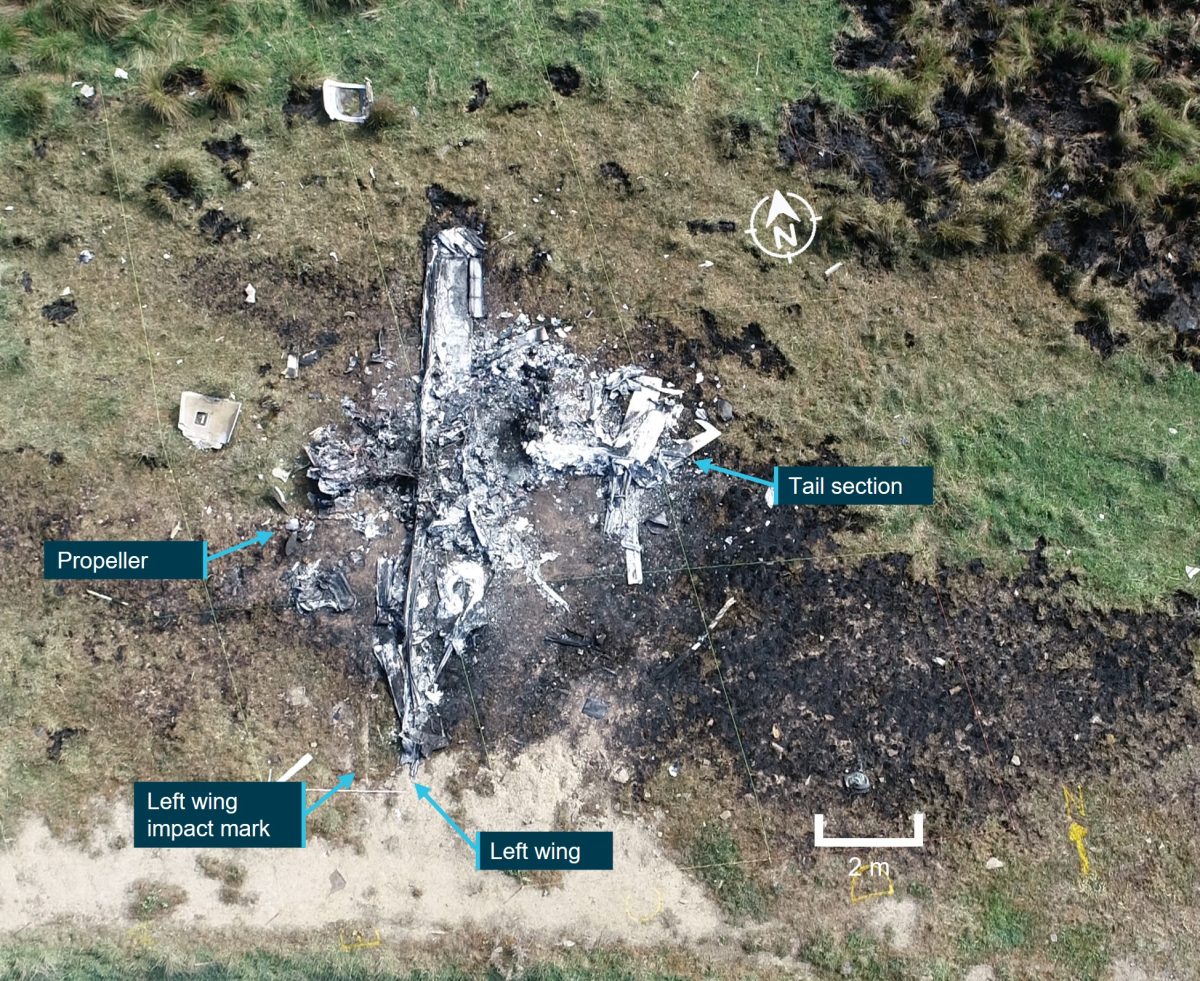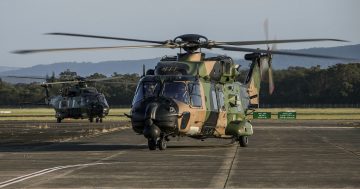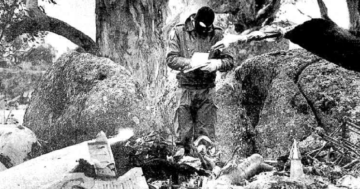
The collision occurred on a private property in an open field adjacent to a dam. Photo: ATSB.
The Australian Transport Safety Bureau (ATSB) has released its preliminary report as part of the ongoing investigation into a plane crash near Canberra that killed a man and three children in October.
Pilot Peter Nally, 65, and his three grandchildren Raphael, Evita and Philomena died on 6 October when the Cirrus SR22 light aircraft crashed and caught alight near the village of Gundaroo, north of Canberra.
The report, which does not outline findings nor provide analysis, details that the aircraft had departed Canberra bound for Armidale with a pilot and three passengers onboard shortly after 2:30 pm, with the pilot operating under the instrument flight rules.
Data from the aircraft’s Automatic Dependent Surveillance Broadcast (ADS-B) transmitter, which broadcasts GPS-derived position and speed information, shows that as it climbed through 7500 ft up to its planned cruising altitude of 10,000 ft, its groundspeed fluctuated and its track varied.
According to the report, several people at locations below the aircraft’s flight path reported “hearing noises that they described as a rough running or surging light aircraft engine”.
Approximately 12 minutes after takeoff, the aircraft was about 25 km north of Canberra, at an altitude of about 10,000 ft, when it abruptly departed from controlled flight and descended steeply towards the ground.
“Two eyewitnesses in the local area described seeing the aircraft at a low altitude, descending rapidly with its nose pitched down and rotating like a corkscrew. One of the witnesses stated that they heard the engine running rough and then stop just before the accident. The other eyewitness was seated on a tractor with the engine running and did not hear the aircraft engine,” the report said.
The aircraft collided with the ground at a ground elevation of about 2250 ft and was destroyed by impact forces and a post-impact fire. All occupants were fatally injured. The eyewitness on the tractor was the first responder on the scene and notified the emergency services.
The collision occurred on a private property in an open field adjacent to a dam.
“Impact marks and wreckage distribution at the accident site indicated that the aircraft impacted with terrain upright, with a slight nose low altitude and with little forward momentum, suggestive of a spin,” ATSB director of transport safety Kerri Hughes said.
“Key components of the aircraft’s airframe parachute system were all located within the wreckage. However, based on the available evidence, the ATSB was unable to determine if an attempt had been made by the pilot to deploy the parachute system before the impact.”
The report said that damage to the propeller blades indicated that the engine had low or no power at impact. The report notes that spin recovery, icing, un-porting of fuel tank outlets in a spin, preparation for use of the parachute, and an engine mechanical issue could all be reasons for a power reduction.
The forecast meteorological conditions at the time of the accident included isolated rain showers, broken cumulus/stratocumulus cloud, and a freezing level of 5000 ft in the south and 8000 ft in the north, conditions that could imply moderate turbulence and moderate icing.
According to the report, pilot Peter Nally held a Private Pilot Licence (Aeroplane) issued in 1985, and with class ratings for single and multi-engine aeroplanes.
The pilot was initially issued with a command instrument rating for single-engine aeroplanes in 1987 and his most recent flight review, on 29 August 2023, was an instrument rating proficiency check with an endorsement for multi-engine aeroplanes. Mr Nally had reportedly accumulated about 800 hours of total flying experience.
The pilot held a Class 2 Aviation Medical Certificate valid to 22 October 2023 with two restrictions: a requirement for reading and distance vision correction to be worn while flying and that a continuous positive airway pressure (CPAP) system be used for the sleep period before flying. The pilot was reported to have been well-rested before the flight and utilised the CPAP while sleeping as required.
The plane was purchased as a second-hand aircraft in the US in 2017 before it arrived in Australia. Since then, it was operated by its owner for private use, community service flights and private charter operations.
The aircraft had completed a 100-hour/annual inspection and maintenance released on 9 November 2022 after 2558.9 flight hours. The parachute system was inspected, and the parachute and rocket motor assemblies were replaced due to time expiry in January 2023.
To date, the ATSB has examined the aircraft and accident site, recovered aircraft components, interviewed relevant parties, collected aircraft, pilot, and operator documentation and conducted a preliminary analysis of flight track data.
“As the investigation continues, the ATSB will continue an assessment of the recovered components, review pilot and operator documentation and pilot medical information, and analyse the aircraft’s performance based on flight track data and meteorological information,” Ms Hughes said.
The ATSB will release a final report detailing contributing factors and analysis at the conclusion of the investigation.

















